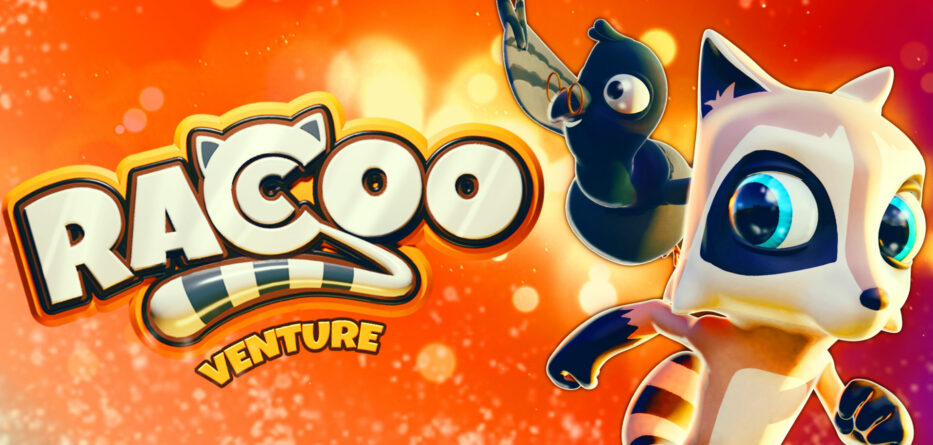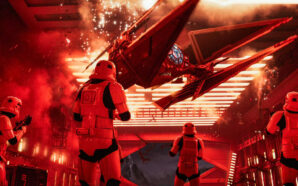I recently had the opportunity to play Raccoo Venture, a loveletter to 3D platformers from two decades ago. So much so, that the titular hero has a games console in their house that looks suspiciously identical to a N64 – a nice little homage I can get behind.
Raccoo Venture has all the hallmarks you can expect from a modern-day N64 title: a cute animal humanoid collecting coins and killing their enemies with a bop on the head. Throw in an extra dose of collectables, such as the missing pages of a journal, hidden chess pieces and lost fairies, and it’s a pretty decent attempt at capturing the magic of the late 90s.
However, the recent spate of 3D platformers inspired by the 90s suffer in places where their 2D sidescrolling brethren do not, so I want to take this opportunity and use Raccoo Venture to make my point.
The 3D Platformer Homage Problem
If I had to describe the new wave of nostalgia-driven 3D platformers in one word it would be precarious.
I don’t know why but these games are insistent and persistent in aping the likes of Banjo Kazooie wholesale with their problems and pitfalls included. Back then, it could be chalked up to the limitations of the technology but that excuse doesn’t fly with me anymore. So why we’re still putting up with it is beyond me.
Here are a few examples of how Raccoo Venture falls into the same trap:
The Lighting
One of the most common challenges with 3D platformers is the perception of depth. You would think that building the game completely in 3D would solve this conundrum but time-and-time again, I found it difficult to fully grasp the actual 3D space.
This is usually due to poor lighting and the absence of shadows. In Raccoo Venture, it’s mostly a lighting issue as Raccoo does have a little circular shadow beneath him when he jumps, and decorative parts of the world project shadows as well. The major drawback for me though, is how flat everything looks. Everything is blanketed in one powerful light source, making it difficult to determine how close or how far away an object is because there’s no depth perception.
What would have helped a great deal was being able to see the 3D space from all directions.
The Locked Camera
Locking the camera can give the game designers the ability to control what the player sees, and this has its advantages in storytelling but not so much in 3D platformers as it restricts the player’s freedom to explore.
What contributed to my depth perception struggle was how Raccoo Venture locks the camera, preventing you from tackling puzzles and fights from an advantageous angle. It made me ponder a few times that Raccoo Venture would have been better as a 3D side scroller instead.
Because you can’t control the camera in Raccoo Venture, you’re going to unceremoniously slip off edges or miscalculate landings, and there are no ‘teetering on the edge’ animations to help you fight off your inevitable death.
The Absence of Contextual Animations
Games are so much more capable than they were 20 years ago and small things like contextual animations help immerse the player in the experience. The best example of a contextual animation is how Nathan Drake brushes his hands across a wall when he’s squeezing himself through a narrow passageway: completely useless but immersive!
The most helpful contextual animation is the ‘teetering on the edge’ animation that indicates you’re about to slip off the edge that gives you a tiny window to save yourself. This tool is paramount in 3D platformers as it’s likely all the platforms won’t have fenced edges, so a brief moment to course-correct is a godsend.
In Raccoo Venture, not even the world has an edge, so accidentally tumbling to your doom is possible at any moment. You slip right off like friction doesn’t exist – unless you’re running, of course.
The Vacuum of Momentum
Momentum can be extremely important in platformers. Your speed often dictates how successful you will be at landing on a moving platform, how quickly you beat a timed puzzle, or how likely you are to avoid a deadly attack.
Raccoo Venture takes the opposite approach however, because every time you jump all of Raccoo’s momentum is drained out of him, bringing him to a standstill. Therefore, it’s impossible to quickly hop across three moving obstacles because you’re forced to stop after every landing. The result of this is being unable to time jumps precisely or land where you want to. The number of times Raccoo narrowly missed a platform by a mere pixel and fell to his death because of this weird quirk is uncountable!
Final Thoughts
These aren’t problems exclusive to Raccoo Venture so I’m not picking on it for any other reason than my recent hands-on with it has highlighted my issues with the 3D homage genre. 2D games that aim to mimic their predecessors rarely fall under the same firestorm because, from my experience at least, these games use modern technology to finely press out the creases. It seems their 3D siblings try to embrace the limitations instead, and quite frankly it’s a terrible idea that I would love to see ironed out.








